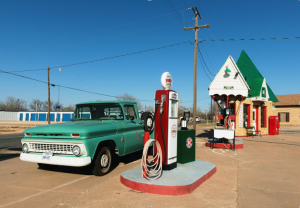 Often times, gas stations are faced with inventory shrinkage. Much to their dismay, it is nearly impossible to avert the cause, or causes rather, leading to fuel loss. However, if the fuel distribution operations are properly scrutinized and fuel storage facilities are adequately ventilated, the inevitable product loss can be managed and controlled to a great deal.
Often times, gas stations are faced with inventory shrinkage. Much to their dismay, it is nearly impossible to avert the cause, or causes rather, leading to fuel loss. However, if the fuel distribution operations are properly scrutinized and fuel storage facilities are adequately ventilated, the inevitable product loss can be managed and controlled to a great deal.
Installing ventilation systems redirects the flammable vapors produced in the fuel tank. There are two ways fuel stations lose their product:
- Working loss
- Breathing loss
Working Loss
Storage tanks encounter working loss during replenishing or emptying of the fuel. While they are being filled, the fluid level rises and there is little or no room for the vapors in the containment.
A reduction in the vapor space causes a subsequent vapor compression, which in turn, builds up the overall pressure inside the vessel.
With the pressure constantly rising during the actual filling, the vapors have nowhere to escape. Conversely, when the fuel is being transferred to a dispensing nozzle, the vapors fill the air. The vacuum causes the air to expand, resulting in an overpressure.
Either way, a continued pressure buildup can eventually lead to a failure of the tank system.
It is good practice to use a vent pipe covered by a pressure vacuum vent (PVV), in order to prevent a tank failure. The PVV has two functions:
- It reduces the overpressure in the tank by opening a poppet valve at a preset pressure or vacuum level. This allows the tank to vent and release excess vapors.
- It provides protection to the vent against water, insects and debris.
Breathing Loss
A loss in the tank’s content may occur when it gives off fuel vapors, a phenomenon known as breathing loss. This happens due to differences in the temperature and pressure within and outside of the tank.
With a vent pipe put in place, the valve opens and sets the vapors free as soon as internal pressure reaches a certain predetermined level. It closes when the pressure in the tank drops to a reasonable value.
To sum it up, poor ventilation in fuel storage tanks can result in product losses. If neglected, the enclosed containment can give in to the pressure buildup and explode.
Does any of this sound familiar? Are you willing to invest in the installation of adequate ventilation systems at your gas station? Get a complete product line-up of ventilation products available with us. We are a reputed pumps equipment supplier, operating since 1930.




